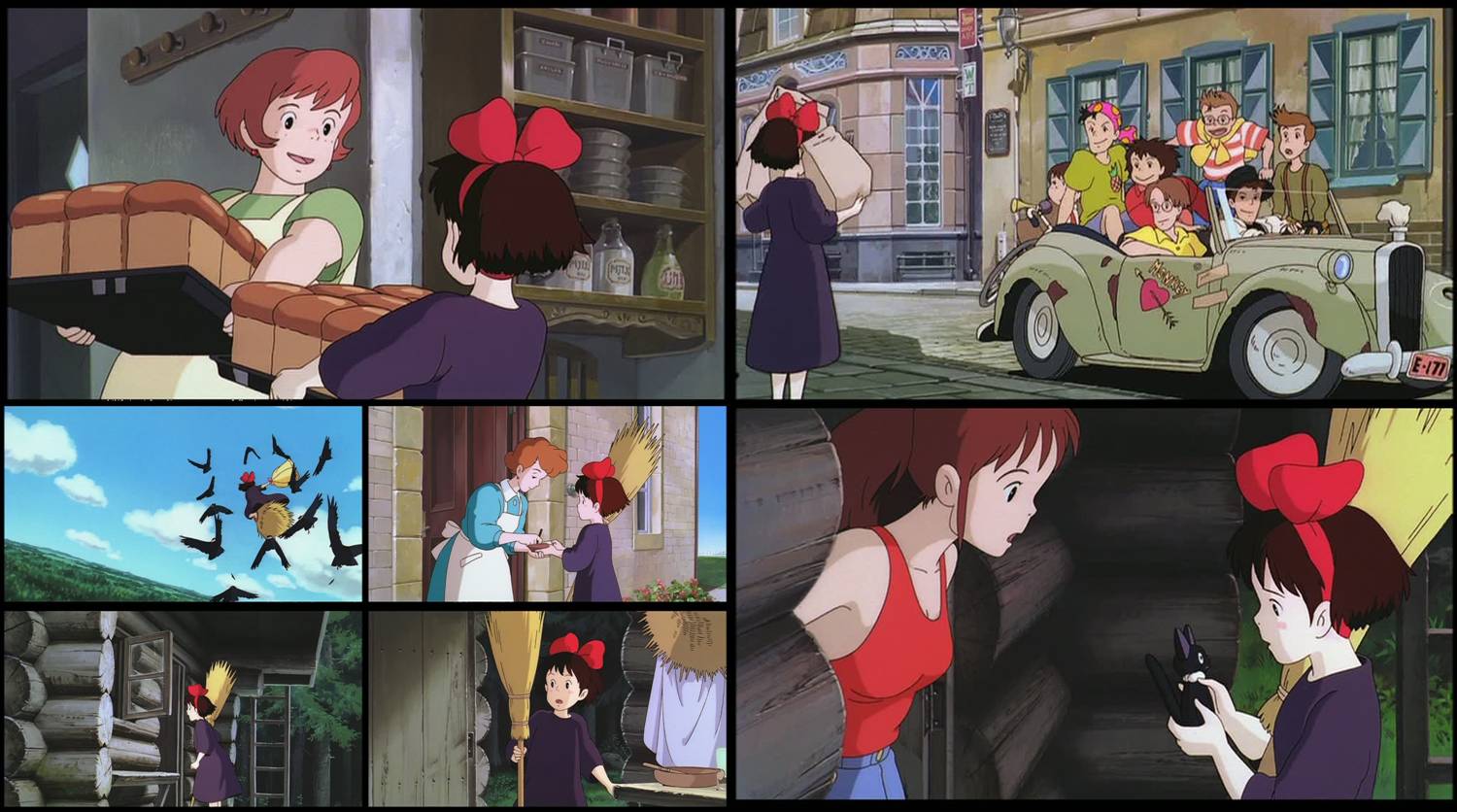Totoro and Kiki: A Tribute June 17, 2013
Author: Beach Combing | in : Actualite , trackback

***Dedicated to little Miss Beachcombing who makes 5 today and who Beach will be spoiling for the next hours***
Ghibli is a Japanese cartoon studio that has, in the last thirty years, created two of the greatest films for children and two of the greatest fairy/witch films ever made: Totoro (1988) and Kiki (1989). Beach thought that he would give these two some publicity here because he is always shocked at how few people have actually heard of them. Now Ghibli have, in fact, brought out a score of children’s films over the past generation. But most, while always visually stunning, are so complicated that the present blogger (despite repeated viewing) has not the slightest idea what is going on in them: his daughters, meanwhile, just sit and gawp. Take Ghibli’s breakthrough film in the west Spirited Away which won an Oscar and proved the Academy’s unerring talent at choosing the worst of a batch.
Totoro and Kiki are though different. They are simple. In fact, they are so simple that it is probably too much to talk of a plot. They are really nothing more than a series of episodes strung together. Kiki describes, for examples, the travails of a young witch, who leaves her parents’ home in her early teens and sets up shop in another city as a delivery witch, flying objects around a Baltic-looking town. The film is really about growing up and Kiki is one of those rare female role models who are actually worth sharing with your children: she is proud, determined and talented. The most alarming thing about this film, something which repeats itself in other Japanese cartoons, is a disturbing penchant for showing young girls’ underwear in scenes reminiscent of Marilyn Monroe on top of the heater. Beach just looks away.
Totoro is, on the other hand, Japanese for ‘troll’ and refers to a nature spirit that lives in a tree next to a house out in the countryside. Two girls and their archaeologist father come to live in the house and the children slowly make an alliance with their peculiar neighbour, who is naturally never seen by any adult. The film is set in postwar Japan: in fact, it was originally released as part of a double bill with Grave of the Fireflies, a cartoon about the death of two Japanese children in the war (which Beach has never had the courage to watch). It is the perfect counterpoise to 1945. The archaeologist Dad may, for all we know, have spent the previous years bayoneting Korean peasants. But this is a Japan that is slowly coming back to life and the film catches that bittersweet moment as the island prepares for its economic miracle: the mother suitably enough spends the whole time in hospital suffering from a life-threatening undisclosed condition. The film also has one of the greatest scenes in cartoon history when Totoro and the girls make the ‘acorns’ sprout: Bambi has nothing on this.
Beach has noted previously here that there are not many good fairy films around. Others: drbeachcombing AT yahoo DOT com? Totoro and his colleagues, even if not fairies in the western tradition, help to make up the deficit. Another Ghibli film offers, instead, a take on the tutelary spirits in houses, Arrietty (2010) and is the best film put out by the studio since Kiki and Totoro: any parents reading this post you have been advised by one who wastes too much time watching children’s films…
***
21 June 2013: Invisible writes in: Your post mentioning Arrietty jogged my memory at how much I loved the Borrower books by Mary Norton. Those should be on the reading list–for your girls’ sake and for yours if you haven’t read them. As a miniatures collector (read “nut'”) I was always fascinated with stories about tiny things and books where doll house dolls came alive. (Rumer Godden: The Dolls’ House, Rackety Packety House by Burnett). Good times! Brian, meanwhile, writes in: Can I suggest Pan’s Labyrinth, by the Spanish director Guillermo del Toro? About children, but decidedly not for children, though. Interestingly, it’s set not long before the end of WW2, in Franco’s Spain. The insect-like fairies are truly strange. And I don’t get the Spirited Away dissing. One of my favourite films, animated or otherwise.’ Thanks Brian and Invisible: and several emails agreed with Brian about Spirited Away. I find the graphics incredible, but the plot a bit confused.


